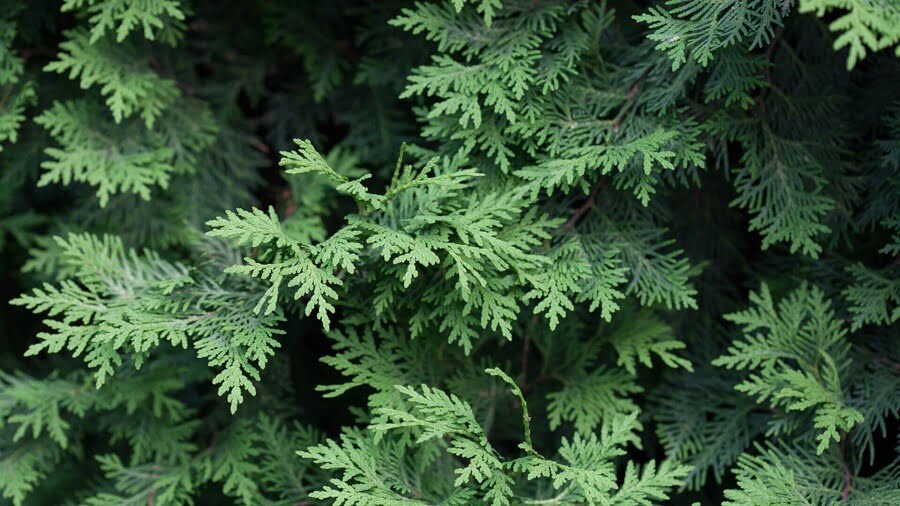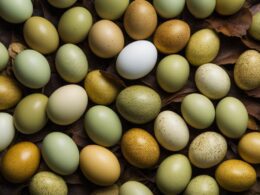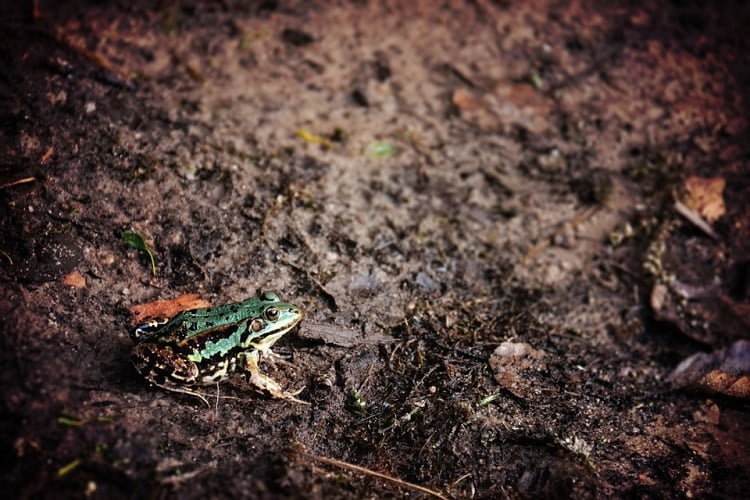7 Evergreen Plants and How to Take Care of Them
1. Camellia
Perhaps one of the most gorgeous evergreen plants that you could consider for your garden, Camellia is breathtaking due to its large and colorful flowers. However, this is not what makes this shrub perfect all year round. Its deep green foliage stays the same no matter the season. You can find both dwarf Camellia shrubs and tall ones. So it all depends on the space you have available in your garden. However, no Camellia shrub will grow taller than 6 feet. If you notice the shrubs growing taller than you want them too, you can always prune them vigorously, since they are not sensitive to that. You should also know that they require partial shade and an acidic soil. Their flowers come in different colors such as pink, white, yellow, and red, and they bloom in spring. They are quite large and grow abundantly, providing your garden with a lovely array of colorful blooms.
Their flowers come in different colors such as pink, white, yellow, and red, and they bloom in spring. They are quite large and grow abundantly, providing your garden with a lovely array of colorful blooms.
2. Lavender
Many people adore the smell of lavender. If you are one of them, then you should definitely consider planting some in your garden. However, not many of the same people actually know that lavender is part of the category of evergreen plants. That is mainly because the focus is always on the flowers. They bloom in summer, but you will be able to enjoy the scent of lavender all year round since the foliage also contains it.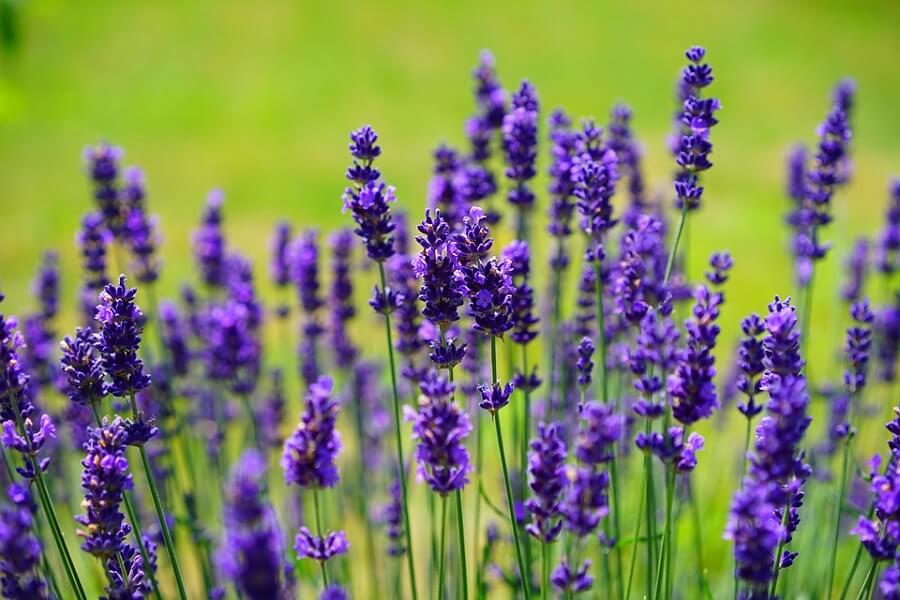 Unlike most evergreen plants, lavender doesn’t have a dark green foliage, but a silver green one. This makes for a lovely contrast with other evergreen plants in your garden. Lavender comes from the Mediterranean. This means that if you have a sandy soil, plenty of sunlight, and not that much rain, this plant will adjust perfectly in your garden.
Unlike most evergreen plants, lavender doesn’t have a dark green foliage, but a silver green one. This makes for a lovely contrast with other evergreen plants in your garden. Lavender comes from the Mediterranean. This means that if you have a sandy soil, plenty of sunlight, and not that much rain, this plant will adjust perfectly in your garden.
3. Mahonia
Yet another evergreen plant that has the added benefit of gorgeous flowers, the Mahonia has spiny leaves and a nicely-structured shape. Plus, the plant is easy to take care of and doesn’t require any extraordinary conditions. It can grow in multiple kinds of soil and you can use it as ground cover, as well as a really beautiful decorative plant.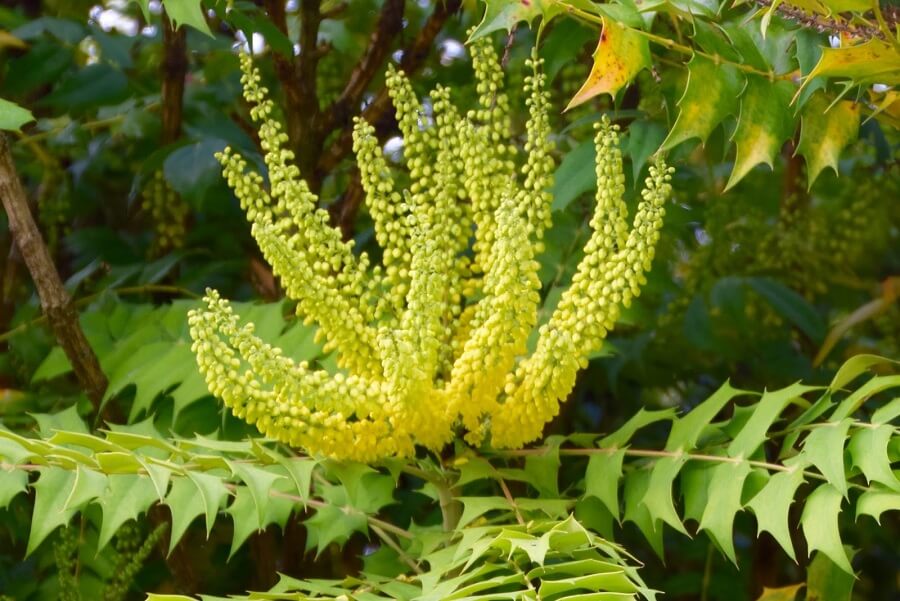 The flowers are bright yellow and they grow in clusters at the very tip of the leaves. Possibly the best thing about them is that they bloom in late winter. This will definitely chase away some of the bleakness in your garden. The flowers also smell really good and they are easy to spot from a distance, which will definitely make them the centerpiece of your backyard.
The flowers are bright yellow and they grow in clusters at the very tip of the leaves. Possibly the best thing about them is that they bloom in late winter. This will definitely chase away some of the bleakness in your garden. The flowers also smell really good and they are easy to spot from a distance, which will definitely make them the centerpiece of your backyard.
4. Holly
Holly is one of the most well-known evergreen plants. That is largely due to the fact that it grows red berries around Christmas. The foliage is also incredibly beautiful, being one of the darkest shades of green that you can find in any evergreen plant. The leaves are glossy and the berries definitely stand out.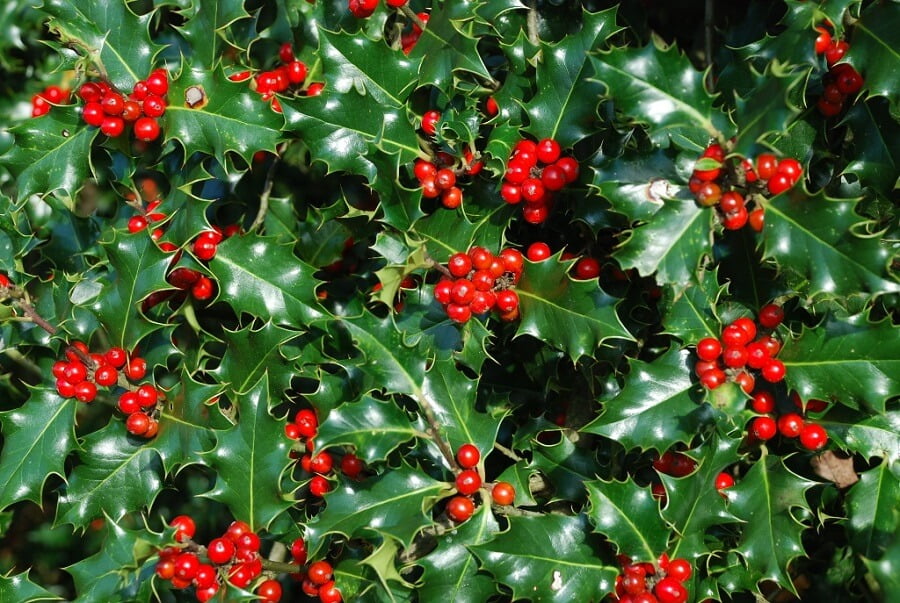 Also, you don’t have to worry about taking great care of these shrubs. They develop nicely both in full sunlight and partial shade. While the Holly flowers are preferred by bees, the berries are a great source of food for birds during the cold season. So planting some Holly shrubs in your garden would also help the ecosystem.
Also, you don’t have to worry about taking great care of these shrubs. They develop nicely both in full sunlight and partial shade. While the Holly flowers are preferred by bees, the berries are a great source of food for birds during the cold season. So planting some Holly shrubs in your garden would also help the ecosystem.
5. Aucuba
If you live in a place where the climatic conditions are harsh, but you still want some evergreen plants in your garden, the Aucuba shrub is definitely one of the best options. It doesn’t really need sunlight, it can stand dry soil, salty conditions, and even high pollution. There are many types of Aucuba shrubs out there. Perhaps the most popular one comes with a dark green and bright yellow foliage that makes for a lovely contrast. The leaves look and feel leathery and glossy. Moreover, you can get red berries in autumn from the female plants as long as they have a male pollination partner close by.
There are many types of Aucuba shrubs out there. Perhaps the most popular one comes with a dark green and bright yellow foliage that makes for a lovely contrast. The leaves look and feel leathery and glossy. Moreover, you can get red berries in autumn from the female plants as long as they have a male pollination partner close by.
6. Fatsia
Perhaps one of the most interesting things about the Fatsia shrub is that its leaves look like hands that have grown in an upright position. Moreover, you don’t have to struggle to plant it. You don’t even have to invest a lot of time in taking care of it. This shrub is quite resistant, so you can plant it in the shade as well as the sun.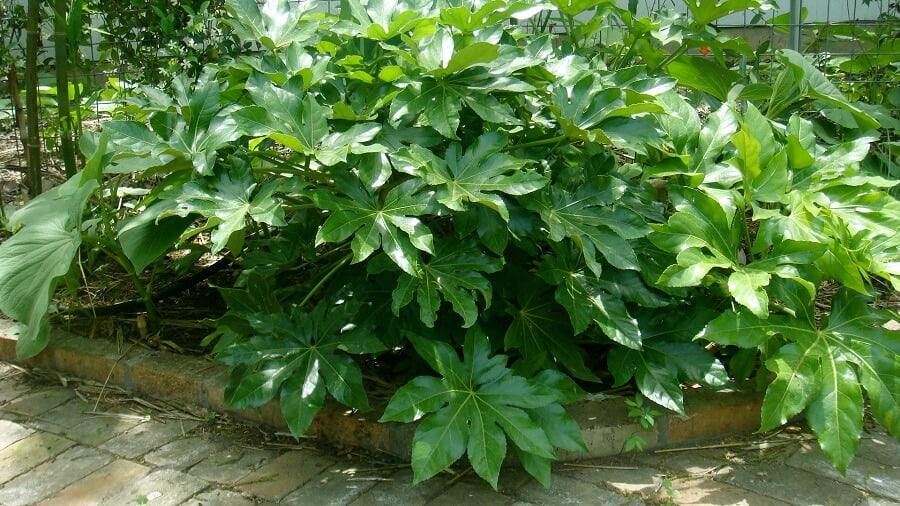 Since the glossy leaves are quite large, you should consider that you might need more space for the Fatsia. The flowers are a lovely white color and they bloom during autumn, making the shrub the centerpiece of your garden.
Since the glossy leaves are quite large, you should consider that you might need more space for the Fatsia. The flowers are a lovely white color and they bloom during autumn, making the shrub the centerpiece of your garden.
7. Daphne
Finally, the Daphne shrub is another one of the evergreen plants that bloom in winter. This will make for a nice bright addition to your garden. The shrubs are really small and compact. So if you don’t have that much space in your garden, this is the right option for you. Plus, the Daphne shrub is perfect for both shaded and sunny areas.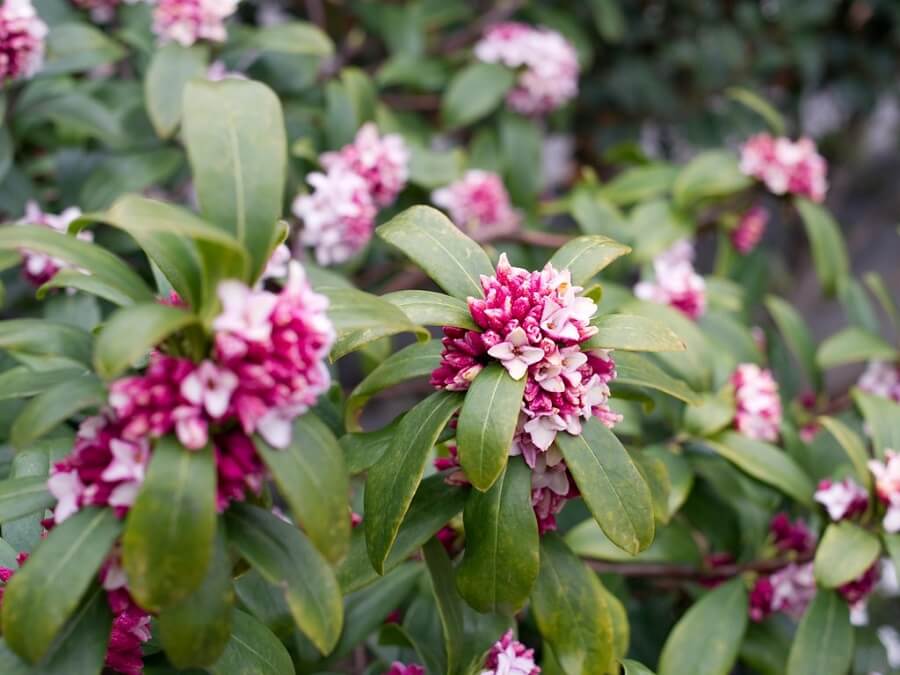 The foliage is quite spectacular since it has yellow edges that contrast with the center of the leaves which is dark green. Not to mention the fact that the flowers are purple and smell amazing. Overall, this shrub is the perfect mixture of beautiful and compact that many people look for in evergreen plants.
The foliage is quite spectacular since it has yellow edges that contrast with the center of the leaves which is dark green. Not to mention the fact that the flowers are purple and smell amazing. Overall, this shrub is the perfect mixture of beautiful and compact that many people look for in evergreen plants.
Extra Tips on How to Take Care of Evergreen Plants
Now that we’ve covered 7 of the best evergreen plants that you could have in your garden and what each of them likes, we thought we would complete today’s guide by mentioning some extra tips that you can apply to any of them.1. Beware of the Placement
Perhaps one of the most important things you should keep in mind before plating an evergreen shrub is the best area to do so. Most evergreen plants thrive in the shade, so unless clearly specified, don’t plant them in full sunlight. This might damage their foliage. Moreover, think about the fact that you should also protect them from the wind. If you can’t do that naturally by finding a less windy place in your garden, you can use a wind-breaking fence. Some evergreen plants do not enjoy clay or overly wet soil. So if you know this is the case in your garden, we recommend you to plant the shrubs in containers instead.Are Viburnum Shrubs Considered Evergreen Plants? How Do I Care for Them?
Viburnum shrubs are available in different types and require specific care. While some varieties, like the Viburnum tinus, are evergreen, others may be deciduous. For proper care, ensure they receive adequate sunlight and well-draining soil. Regular watering, mulching, and pruning will help maintain their health and shape. Remember, understanding the types of viburnum shrubs and care practices is crucial for their longevity and vibrancy.
2. Fertilize Them
Usually, evergreens grow really slowly, which means they have plenty of time to get their nutrients from the soil. However, soil which is sandy or has a basic pH might not provide your shrubs with all the nutrients they require. For instance, have you ever noticed the foliage turning pale green? This might signal a lack of nitrogen, which means that you need to fertilize your shrubs properly. You can use a fertilizer that is targeted to evergreen plants, such as Jobe’s Evergreen Fertilizer Spikes that you can find on Amazon for $8.97.Are Evergreen Plants Suitable for Growing in the Fall?
Evergreen plants are not typically suitable for growing in the fall, as they are known for retaining their leaves year-round. Instead, gardeners should focus on cultivating top fall vegetables which thrive in cooler temperatures, such as kale, spinach, carrots, and beets. These vibrant crops offer a delightful harvest during the autumn season.
Usually, evergreens grow really slowly, which means they have plenty of time to get their nutrients from the soil. However, soil which is sandy or has a basic pH might not provide your shrubs with all the nutrients they require. For instance, have you ever noticed the foliage turning pale green? This might signal a lack of nitrogen, which means that you need to fertilize your shrubs properly. You can use a fertilizer that is targeted to evergreen plants, such as Jobe’s Evergreen Fertilizer Spikes that you can find on Amazon for $8.97. https://www.youtube.com/watch?v=USbqMdl1WGo




